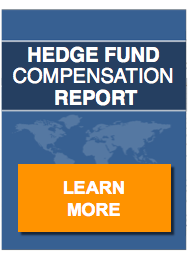In Part 1, we discussed the term institutional investor, as it is widely understood, and sought to bring greater clarity by providing an overview of the variety of institutional investors that exist in the institutional investor universe.
Let us begin Part 2 with sovereign wealth funds (SWFs).
Sovereign Wealth Funds
An SWF is an investment fund owned and controlled by a sovereign nation, which has an investable asset base derived from its reserves.
Typically, such assets have been set aside for multi-generational savings, reserve management, fiscal stabilization, retirement benefits, or development.
While most of SWF funding comes from budget and trade surpluses, it may also be the result of revenue generated from exports. Broadly, SWF investors are not liability driven. Therefore, they are more likely to look long-term with regard to their investment activities. Such funds have the freedom to pursue innovative strategies and exploit the advantages they are afforded by virtue of their unique nature. Regrettably, such funds may fall victim to political pressures and under-performance.
Outsourced CIOs
Globally, institutional investors, faced with an increasingly complex investment choices, are outsourcing management of all or part of their portfolios to OCIOs, which are outsourced chief investment officers.
Single Family Offices
A single family office (SFO) is a private company that manages investments and trusts for a single family entity. They have grown in number in recent years and are estimated to have total assets under management (AUM) of more than $1 trillion allocated across 3 thousand offices.
These investment vehicles are used exclusively by the ultra-wealthy and their sole function is to manage the family fortune. These privately owned SFOs manage not only the investments, but also the taxes, charitable activities, legal and other family financial matters.
Endowments and Foundations
An endowment is typically associated with an educational institution, while a foundation is associated with grants for a variety of worthwhile purposes. In either case, it is ultimately a large pool of money benefiting a specific philanthropic cause.
Collectively, these entities control almost $1.5 trillion in assets, of which they pay out 4 to 5 percent on an annual basis. Logically, their investment portfolio must be crafted to support this goal, which gives rise to unique fundraising opportunities for motivated marketers.
Multi-Family Offices
While they are few, an estimated 150 multi-family offices in the United States, they control more than $450 billion in AUM. The services they provide parallel those of the single family office—the major difference being that they work with more than a single family group. The services they provide parallel those of the single family office.
The threshold for using their services is around $20 million.
Final Thoughts
Because the investment landscape is always subject to change, there is no substitute for staying abreast of developments. Marketers should understand that developing a depth of knowledge will almost certainly expose new fundraising opportunities.
Hopefully, the information provided here, will encourage marketers to gain new insights in other areas that can drive future marketing campaigns.


